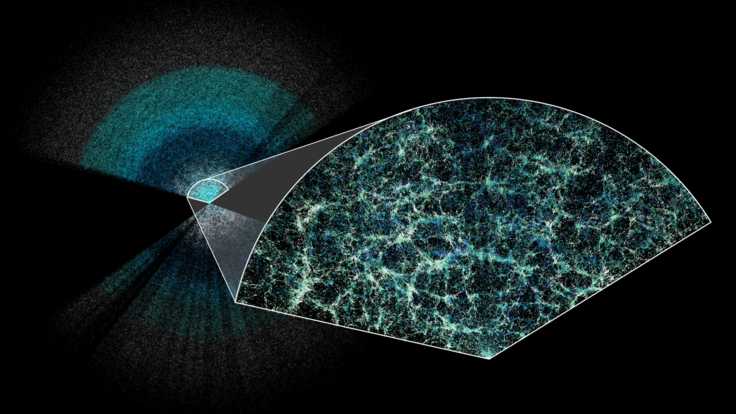I just saw physicist Peter Steinberg's blog on artwork with ties to science. The image that caught my eye shows an intricate web occupying an entire room, which he describes as "a room-size set of connecting elastic rope segments."

I'm not always a fan of sculpture, but every once in a while you find examples that demand your attention. The artist, Tomas Saraceno, is known for combining elements of physics, engineering, and architecture into his works. This particular piece, from his latest exhibition "Galaxies Forming Along Filaments, Like Droplets Along the Strands of A Spider's Web" is an interpretation of our early universe.
The gallery describes the work this way:
In this new installation Saraceno takes the spider’s web as a starting point. Investigating how the gossamer thin filaments of these intricate webs are able to suspend life by way of intricate geometry, Saraceno suggests at a conceptual architectural proposal that relies on this most delicate and prehistoric system of life to take us into our future. Of particular interest is the application of this phenomenon throughout the history of time. A keystone to Saraceno’s fascination with these web constructions was the recent discovery that suggests the early universe was a sponge-like form, with galaxies forming along filaments, like droplets on a spider's web.
Steinberg writes:
I have to admit that it does a pretty good job evoking the images coming from dark matter simulations, where dark matter clumps up into filaments that sketch out a "spongy" structure.
By Matt Cunningham, symmetry intern






